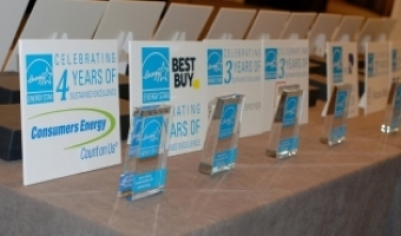

New revisions to the CEESM Commercial Lighting Systems Initiative and its accompanying specification, effective August 30, 2018, move the Initiative forward to help programs capture maximum savings. Building on recent years’ dramatic successes in increased use of highly efficient replacement lamps, the Initiative has expanded its scope to help programs claim the plentiful savings that remain in commercial lighting.
The Initiative’s first path to delivering savings is to provide clear and credible marketplace definitions for energy efficient replacement lamps operable on existing T8 ballasts. The 2018 revisions sharpen this strategy’s focus by creating separate specifications for T8 fluorescent replacement lamps and tubular LEDs (TLEDs). This separation recognizes continued TLED market growth and the emergence of member programs that differentiate by technology. Through the use of separate specifications, the Initiative can support the 32 CEE member programs currently referencing the CEE specification as the qualifying basis for their fluorescent T8 lamp measures while also defining higher levels of performance for TLEDs. The new Tier 1 for TLEDs requires luminous efficacy 10 percent higher than the previous multitechnology Tier 1, while the new TLED Tier 2 highlights lamps with even higher efficacy and increased beam width to help mitigate glare.
| To further support the market’s migration toward higher efficiency, and in recognition of successful market progress in recent years, CEE has updated its specification for T8 fluorescent replacement lamps to focus on reduced wattage lamps less than 28 watts and raised Tier 0 and Tier 1 efficacy requirements to ≥92.4 and ≥96.0 lm/W respectively. Depending on tier and lamp type, replacing a lamp of baseline efficiency with one qualifying for a CEE tier offers energy savings gains of 13 to 53 percent. With 30 percent annual turnover among the 1.1 billion linear fixtures installed in the United States, these gains per unit spell a significant savings opportunity. |
Replacing a lamp of baseline efficiency with one qualifying for a CEE tier offers energy savings gains of 13 to 53 percent. |
The Initiative also helps members achieve savings by providing consensus guidance for programs and approaches that offer greater savings by going beyond lamp replacement alone. DOE projects that energy savings from LEDs will reach 5.1 quads per year by 2035, and nearly half of those projected savings are linked to connected lighting. As a next step, CEE is working toward consensus approaches to whole building integration and connected lighting, helping members maximize efficiency savings from whole building energy management systems.
The full CEESM Commercial Lighting Systems Initiative and its accompanying specification are now available. A new Qualifying Products List (QPL), listing commercially available lamps that meet the revised CEE tier specifications, will be released later this month. To learn more, or to find out how you can contribute to moving the commercial lighting market forward, contact CEE Principal Program Manager Ted Jones.
About CEE
CEE is an award-winning consortium of
efficiency program administrators from the United States and Canada.
Members work to unify program approaches across jurisdictions to
increase the success of efficiency in markets. By joining forces at CEE,
individual electric and gas efficiency programs are able to partner not
only with each other, but also with other industries, trade
associations, and government agencies. Working together, administrators
leverage the effect of their ratepayer funding, exchange information on
successful practices and, by doing so, achieve greater energy efficiency
for the public good.